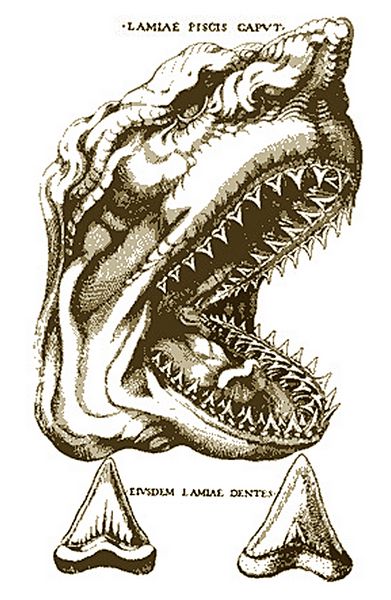Athena Review Image Archive ™
Steno's drawing of shark's jaw and teeth (1667)

Drawing of shark's jaw and teeth (Steno 1667).
Nicholas Steno
(1638-1686) was a Danish Catholic bishop who also worked as an
anatomist. He is recognized as a pioneer in the study of layered
sedimentary rock formations as organized sequences which could be
identified, found elsewhere, and compared. In 1667, Steno first
described in published form the principle of superposition, that
younger rock layers and their fossil contents are higher than older
ones.
Regarding
the creation of fossils, Steno well understood that as the rocks
formed, the remains of life were turned into fossils and preserved in
that layer. He explained the replacement process of
fossilization in terms of the then current belief that matter was
composed of tiny “corpuscles” (somewhat comparable to molecules). Steno
proposed that the corpuscles in sharks teeth were replaced individually
by mineral corpuscles. Thus while gradually turning from tissue to
stone, the shark's teeth retained their original form. This is not very
different from currently accepted explanations of fossilization by
mineral replacement.
Reference:
Steno, N. 1667. Nicolai
Stenonis Elementorum Myologiae Specimen, seu Musculi Descriptio
Geometrica, cui accedunt canis carchariae dissectum caput et dissectus
piscis ex canum genere. Florentiae : ex typ. sub signo Stellae, via Bibliothèque interuniversitaire de médecine, Paris.
Copyright © 1996-2020 Rust Family Foundation (All Rights Reserved).